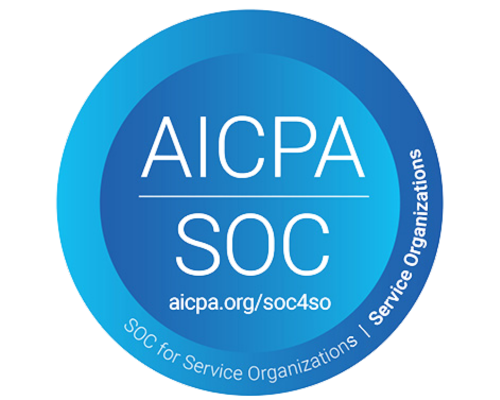Avoiding Discrimination in I-9 Compliance: Best Practices for Protecting Employee Rights

Introduction
In 2025, employers will face a dual challenge: ensuring compliance with I-9 requirements while safeguarding employee rights to avoid discrimination claims. With increased scrutiny on the intersection of employment compliance and civil rights, employers must balance legal obligations with fair treatment of all employees. This delicate balance has become a focal point of federal efforts to enforce compliance while upholding the anti-discrimination provisions outlined in the Immigration and Nationality Act (INA).
The INA and Its Impact on I-9 Compliance
The Immigration and Nationality Act (INA) prohibits discrimination in hiring, firing, or verifying employment eligibility based on citizenship or immigration status, as well as national origin. These anti-discrimination provisions are designed to protect employees from unfair treatment during the I-9 process, which has historically been a source of potential bias due to unnecessary document requests or selective enforcement.
Employers found to violate the INA can face steep penalties, including fines ranging from $573 to $22,928 for discriminatory practices, as updated in June 2024 by the Department of Homeland Security (DHS).
The Growing Emphasis on Employee Rights
Recent years have seen a heightened focus on educating employers to prevent discriminatory practices during the I-9 process. Federal agencies like the Department of Justice’s Civil Rights Division and the Department of Homeland Security have launched initiatives to ensure employers understand the nuances of anti-discrimination laws.
Key areas of concern include:
- Avoiding Over-Documentation: Requesting additional documents beyond those required to verify employment eligibility is considered discriminatory. For example, asking a non-citizen employee for more proof than a citizen would be a violation of the INA.
- Consistent Practices Across Employees: Employers must treat all employees equally during the I-9 verification process, regardless of their perceived immigration status or national origin.
- Handling Document Expirations Fairly:
Employers must remind all employees—citizens and non-citizens alike—to renew work authorizations without singling out certain individuals.
Practical Steps to Balance Compliance with Employee Rights
To navigate the complexities of I-9 compliance without crossing the line into discriminatory practices, employers should follow these best practices:
- Train HR Teams Regularly: Provide your HR personnel with thorough and ongoing training on I-9 compliance and anti-discrimination laws under the INA.
- Standardize the I-9 Process: Use a consistent and documented process for verifying all employees’ work eligibility, ensuring equal treatment for everyone.
- Avoid Over-Documentation: Familiarize your team with the acceptable documents under List A, List B, and List C of the Form I-9 instructions and adhere to the minimum requirements.
- Leverage Technology: Consider tools that automate I-9 verification to reduce human error and ensure compliance with both technical requirements and anti-discrimination laws.
- Review Procedures Regularly: Regularly audit your I-9 practices to identify areas of improvement and ensure compliance with the latest legal updates.
The stakes for compliance have never been higher, with recent trends and statistics underscoring the critical importance of adhering to both technical requirements and anti-discrimination laws.
Why Compliance and Employee Rights Are More Critical Than Ever
The evolving landscape of I-9 compliance requires employers to stay ahead of growing risks while placing a stronger emphasis on employee rights. With increasing documentation errors, higher penalties for non-compliance, and rising awareness of employee rights, businesses must reassess their I-9 processes to avoid costly fines and reputational damage. These trends underscore a shift in how businesses must approach I-9 compliance moving forward:
- Error Rate: Over 76% of paper I-9 forms contain errors that could result in a fine from Immigration and Customs Enforcement (ICE), leading to discrimination claims or audits.
- Fines for Violations: The penalties for I-9 paperwork violations have increased by 35% in 2024, with the highest fines now exceeding $2,789 per form.
- Discrimination Claims: Claims related to unfair I-9 practices rose by 12% in 2023, emphasizing the growing awareness of employee rights.
These statistics emphasize the critical need for businesses to prioritize both I-9 compliance and fair treatment of employees. As regulatory scrutiny intensifies, proactively addressing errors and ensuring equitable practices will not only help avoid costly fines but also protect your organization from legal and reputational risks.
How Clear I-9 Supports Compliance and Employee Rights
Navigating the fine line between compliance and employee rights can be overwhelming, but Clear I-9 makes it simple. Powered by HRlogics, Clear I-9 ensures your business adheres to federal regulations while prioritizing fair treatment for all employees.
Why Choose Clear I-9:
- Compliance and Fairness Combined: Our platform helps you meet Form I-9 requirements without risking over-documentation or discriminatory practices.
- Automated Accuracy: Clear I-9 reduces human error by automating the verification process, keeping your business compliant with the latest INA guidelines.
- Expert Support: With Clear I-9, you gain access to a network of compliance experts who provide guidance on balancing your legal obligations with employee rights.
- Customizable Scalability: Whether managing a small team or a global workforce, Clear I-9 adapts to meet your needs.
Don’t wait for an audit or discrimination claim to put your business at risk. Request a demo of Clear I-9 today to discover how we can simplify your compliance efforts while safeguarding employee rights. Together, let’s build a workplace that’s fair, compliant, and prepared for the challenges of tomorrow.
Have Questions or Need More Information?





